The short answer to this question is, yes. The real answer, however, is a bit more complicated. In the above episode of our educational video and podcast series on subrogation law and process, On Subrogation: Subrogating When a Tortfeasor Files Bankruptcy, Rathbone Group partner Kim Rathbone discusses alternate avenues to pursuing recovery even when it seems there is nothing to recover.
Generally, there are two types of bankruptcy: Chapter 7 and Chapter 13. In Chapter 7 bankruptcies, any assets included in the plan are discharged. In Chapter 13, the estate is reorganized, the debt consolidated, and small portions repaid in a 3 to 5 year plan.
In Chapter 7 or 13 Asset bankruptcies, your avenue to recovery is similar to pro-rata distributions in underinsured motorist subrogation. You provide a proof of claim to the estate, and the trustee handling the bankruptcy decides what portion of repayment you receive over the 3 to 5 years based on the tortfeasor’s debt load post-consolidation.
Unfortunately, Chapter 7 No Asset bankruptcies are another story.
Successfully Subrogating in Chapter 7 No Assets Bankruptcies
If your tortfeasor filed a Chapter 7 No Assets Bankruptcy, it might seem like there is nothing to pursue and a subrogation claim would not result in significant recovery. However, there are alternate avenues you can take to find a path to recovery; it just takes the right subrogation case management by an adept attorney. Kim Rathbone’s advice? Find an exception to the rules.
One question she often gets in response to this suggestion is, would it be viable to follow the bankruptcy process, make sure everything is discharged, and file a subrogation suit if the tortfeasor does not follow the plan? Maybe, she says. But in practice, this is not something her or the rest of the subrogation team at Rathbone Group see as a common or particularly successful path to achieving recovery.
Instead, find that exception.
Was the incident and subrogation recovery claim included in the bankruptcy? Look at the date the bankruptcy was filed.
- If the date of the claim is after the bankruptcy was filed, you will need to get permission from the court to proceed to subrogate the case.
- If the date of the incident and claim were before, the claim will be included in the plan. Look for any other possible parties that are liable for the loss. There is often an Automatic Stay placed on pursuing subrogation recovery from the bankrupt party. Sometimes, you can file a Relief from Stay to get that freeze lifted, provided you can prove the other liable party has nothing to do with the bankrupt party.
Was there insurance involved in the incident? You may be able to pursue recovery from the tortfeasor’s carrier despite the bankruptcy. The bankruptcy filing does not stop the claims process of recovery from the tortfeasor’s insurer directly. Keep in mind that if the opposing carrier disputes liability, an entirely different subrogation process begins. You will have to file an Adversary Proceeding, which is a standard lawsuit inside of the bankruptcy. Because this costs extra time for you as the subrogation lawyer, and includes extra fees from the court, this avenue of subrogating on behalf of your insured might not make economic sense.
Another exception to bankruptcy is if there was a DWI involved, or an intentionally-tortious act, along with medical damages on the claim. If a DWI is involved, you can automatically proceed on the medical damages. However, if it is an intentional act, you still have to jump through a couple hoops to proceed with your medical subrogation process. You will likely have to have an Adversary Proceeding, where you will be required to prove intent and causation.
Pursuing a Subrogation Claim with a Bankrupt Tortfeasor: Checklist
Let’s sum up the 5 major points of Kim’s discussion on how to navigate this especially adverse subrogation situation:
- Is it a Chapter 7 or 13 Asset bankruptcy where you can file a proof of claim?
- If it’s a Chapter 7 No Asset case, did the subrogation claim fall within the bankruptcy or after it was filed?
- Are there any additional parties to pursue that are separate from the bankruptcy estate?
- Is there an opposing carrier to pursue recovery from?
- Did the incident involve a DWI or intentional act along with medical damages that would make it an exception to discharge?
Answer these questions, and you will be one big step closer to finding your client the best-case scenario for maximizing subrogation recovery from the bankrupt party.
